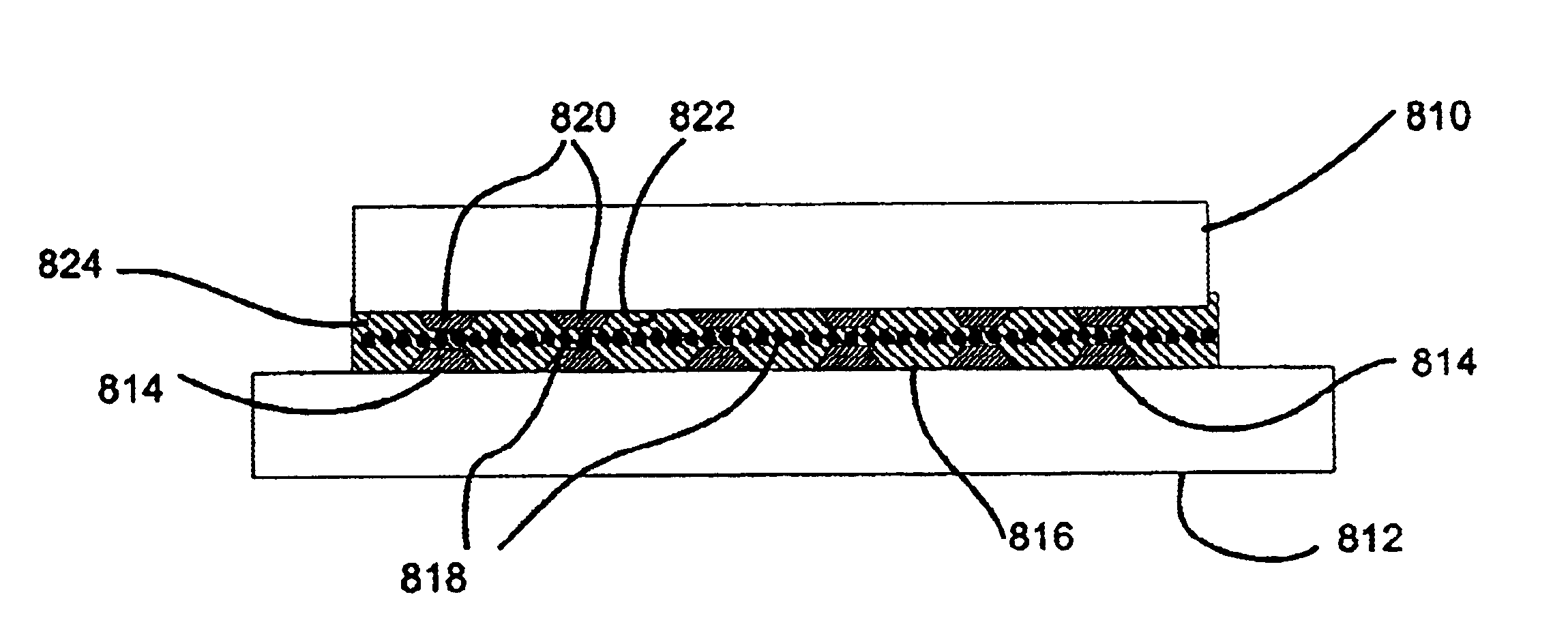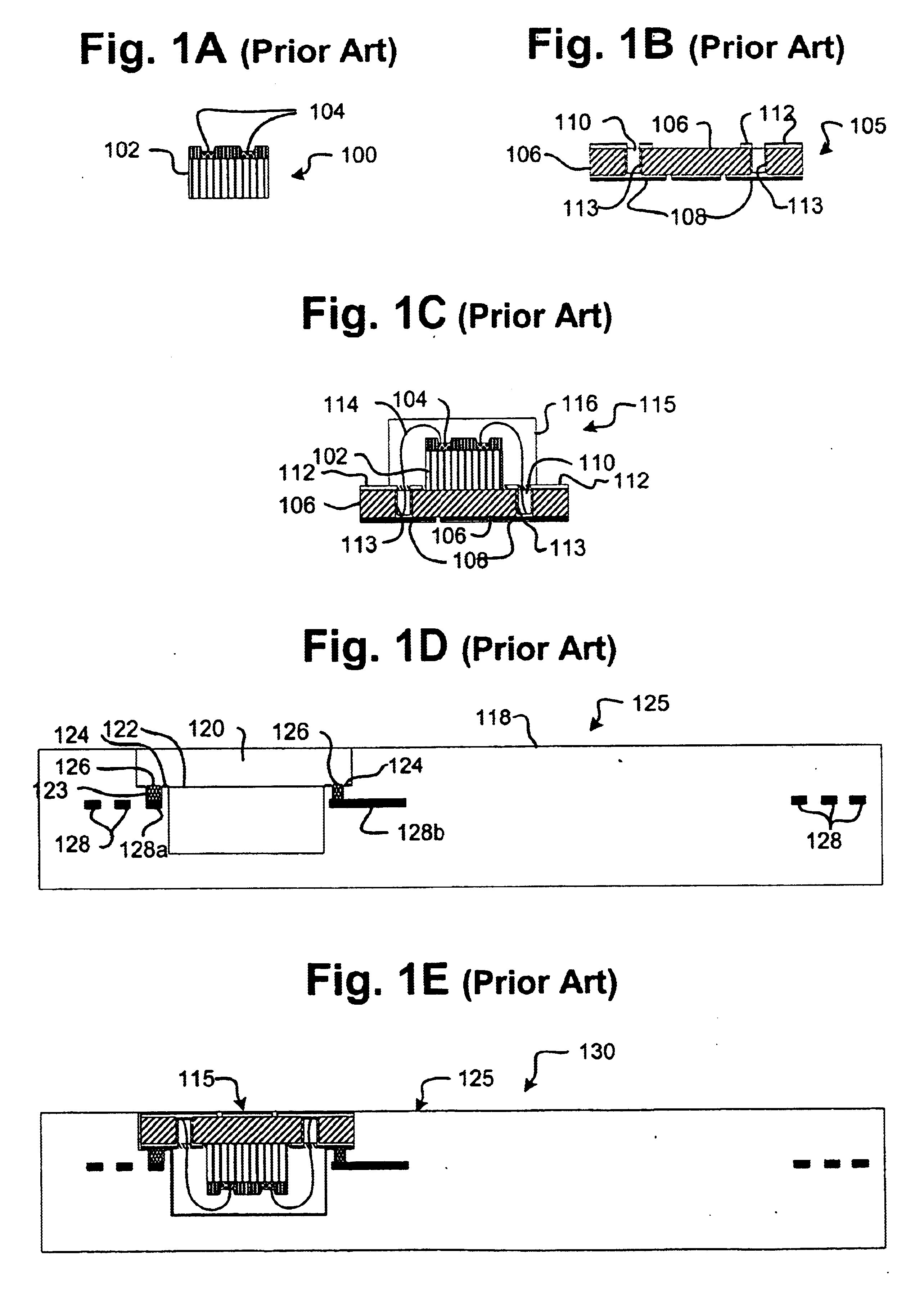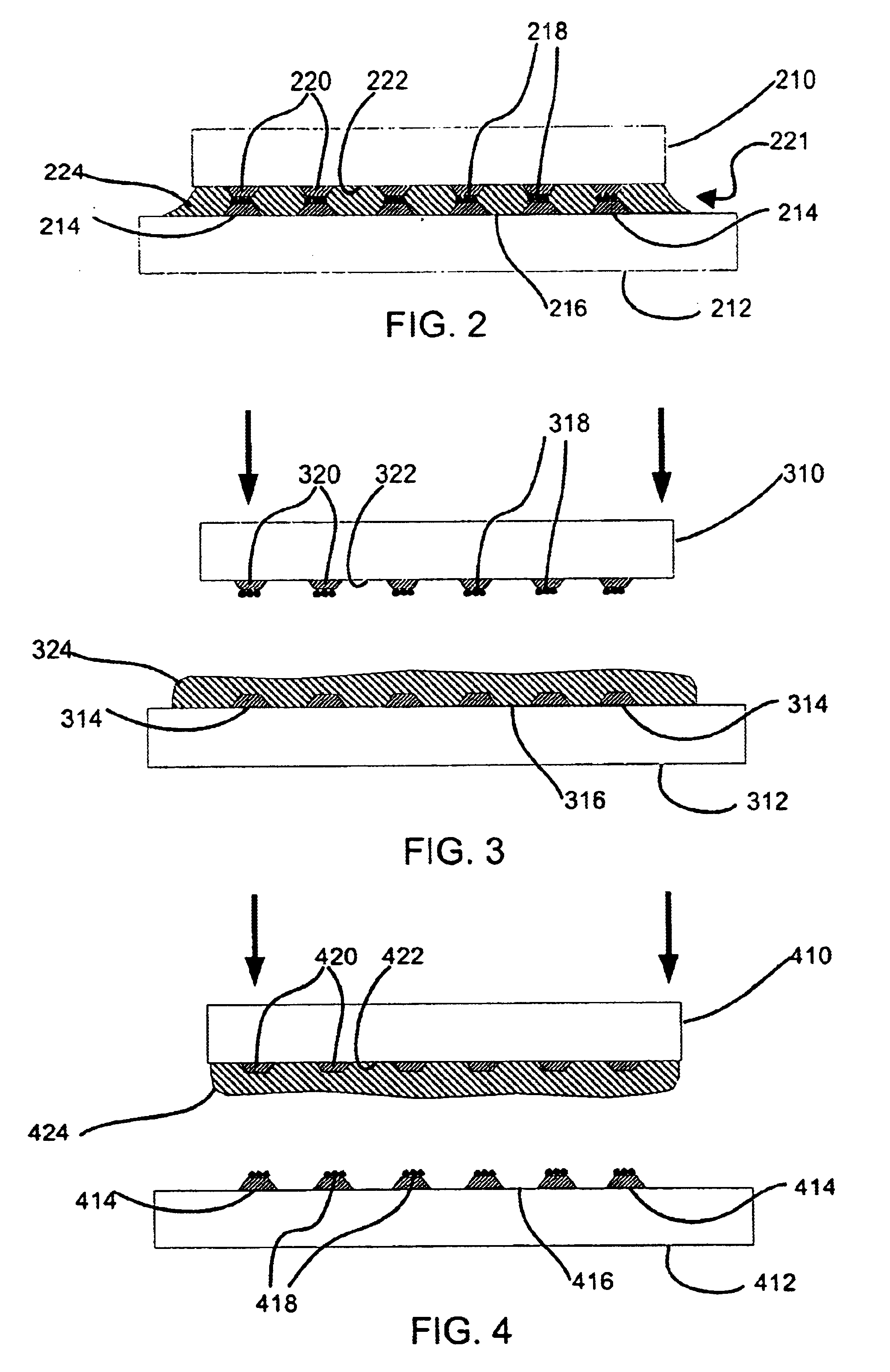Component and antennae assembly in radio frequency identification devices
a technology of radio frequency identification and components, applied in the direction of printed circuit manufacturing, printed element electric connection formation, instruments, etc., can solve the problem of dramatic increase in the manufacturing cost of rfid devices, and achieve the effect of facilitating the production of smart cards and smart inlays and enhancing electrical components
- Summary
- Abstract
- Description
- Claims
- Application Information
AI Technical Summary
Benefits of technology
Problems solved by technology
Method used
Image
Examples
first embodiment
FIG. 12A depicts conducting area 1228 of a coil antenna structure on a smart inlay base 1225. The number of coil windings of the conducting area 1228 is dependant on the are of the smart inlay substrate 1218 and the requirements of the particular chip used. The conducting area may be made, for example, of copper, aluminum, silver, gold, and carbon, and applied to the substrate, for example, by screen printing a metal paste or etching a foil laminate layer. The substrate material 1218 may be paper or plastic foil made, for example, of polyvinyl chloride (PVC), polyethylene (PET), and polypropylene. Antenna contacts 1228a and 1228b are provided on the top of substrate 1218 for placement of a chip as described with reference to FIGS. 11A-11D. A bridge 1228c on the bottom side of the substrate 1218 provides an electrical connection through apertures in the substrate 1218 between antenna contact 1228b and the end of the conducting area 1228 opposite the end of the conducting area 1228 at...
second embodiment
FIG. 12B depicts a conducting area 1228 designed as a multiple coil antenna in a smart inlay 1230b. In this embodiment there is no bridge and the chip 1200 is positioned over the windings of the conductive area 1228 to connect to antenna contacts 1228a and 1228b connecting the ends of one or more of the coils as discussed above with reference to FIGS. 11A-11D. Also the conductive area 1228 is only on one side of the substrate 1218.
third embodiment
FIG. 12C depicts a conducting area 1228 for a smart inlay 1230c. The conducting area consists of a first rectangular conducting area 1228a and a second 1228b rectangular conducting area extending from each side of the chip 1200 along the length of the substrate 1218 of the smart inlay 1230c. The chip 1200 electrically connects with both first rectangular area 1228a and second rectangular area 1228b by its particle-enhanced bond pads as described in FIGS. 11A-11D. This design of conducting areas 1228a and 12228b is, for example, of a high frequency antenna.
PUM
 Login to View More
Login to View More Abstract
Description
Claims
Application Information
 Login to View More
Login to View More - R&D
- Intellectual Property
- Life Sciences
- Materials
- Tech Scout
- Unparalleled Data Quality
- Higher Quality Content
- 60% Fewer Hallucinations
Browse by: Latest US Patents, China's latest patents, Technical Efficacy Thesaurus, Application Domain, Technology Topic, Popular Technical Reports.
© 2025 PatSnap. All rights reserved.Legal|Privacy policy|Modern Slavery Act Transparency Statement|Sitemap|About US| Contact US: help@patsnap.com



